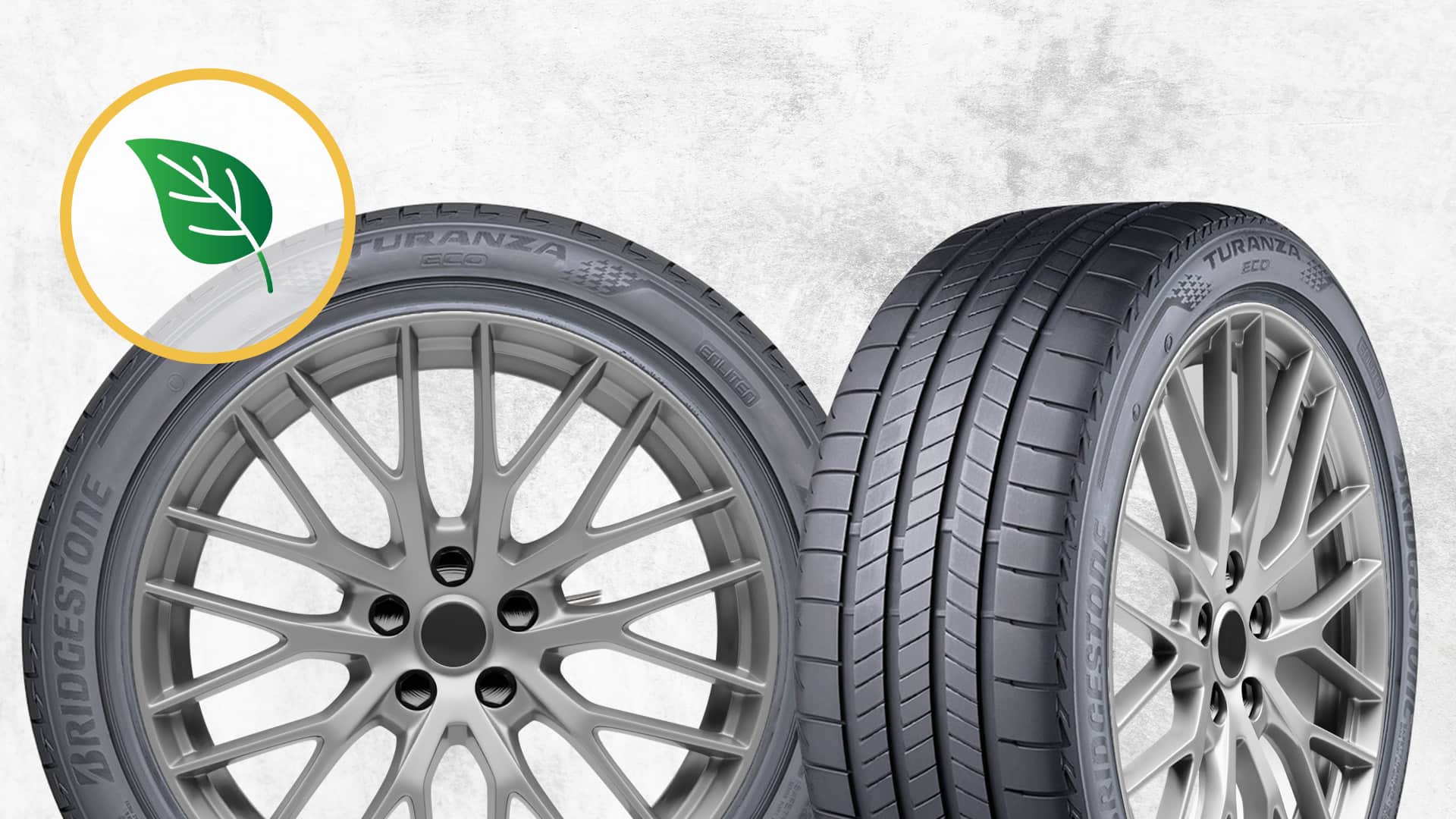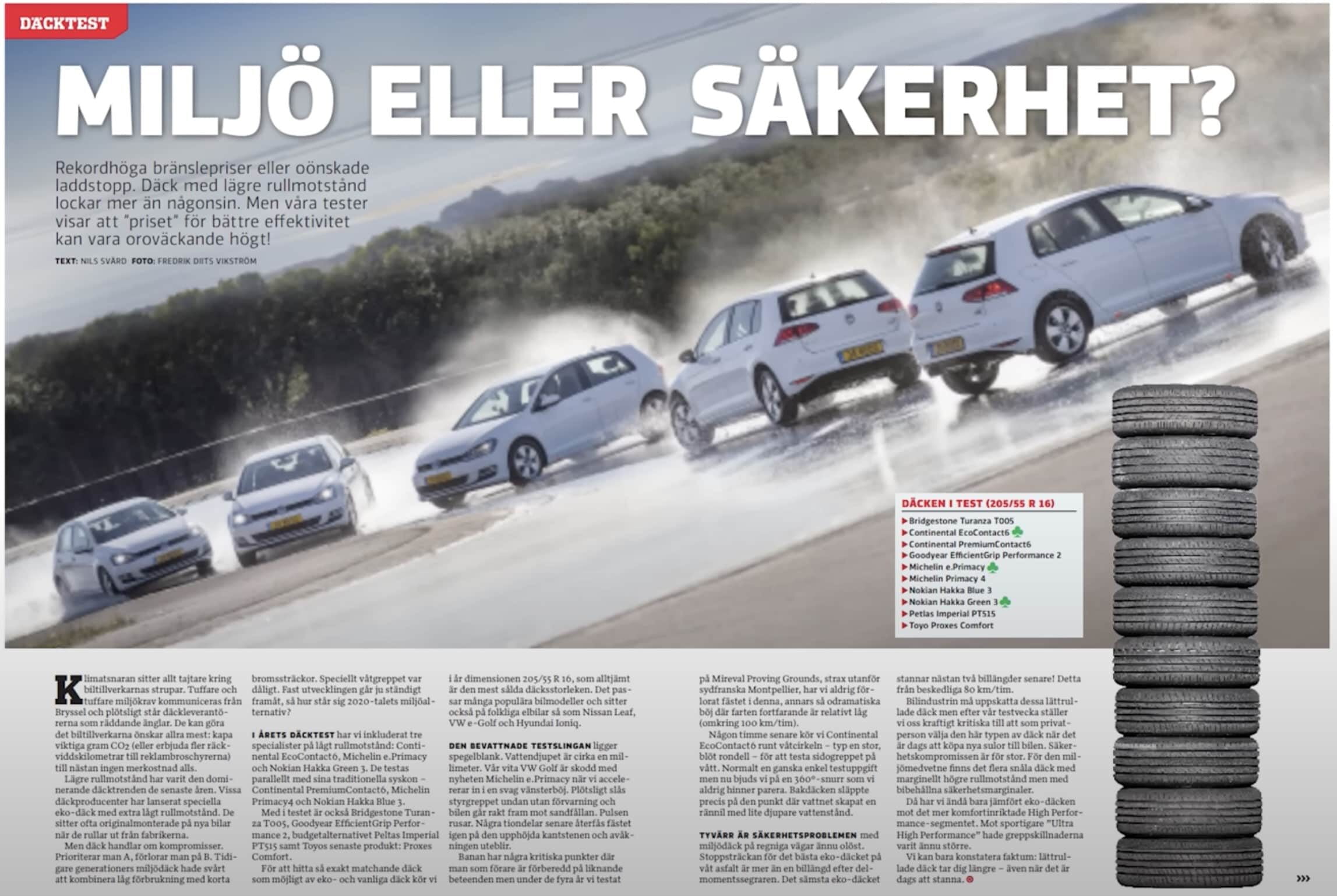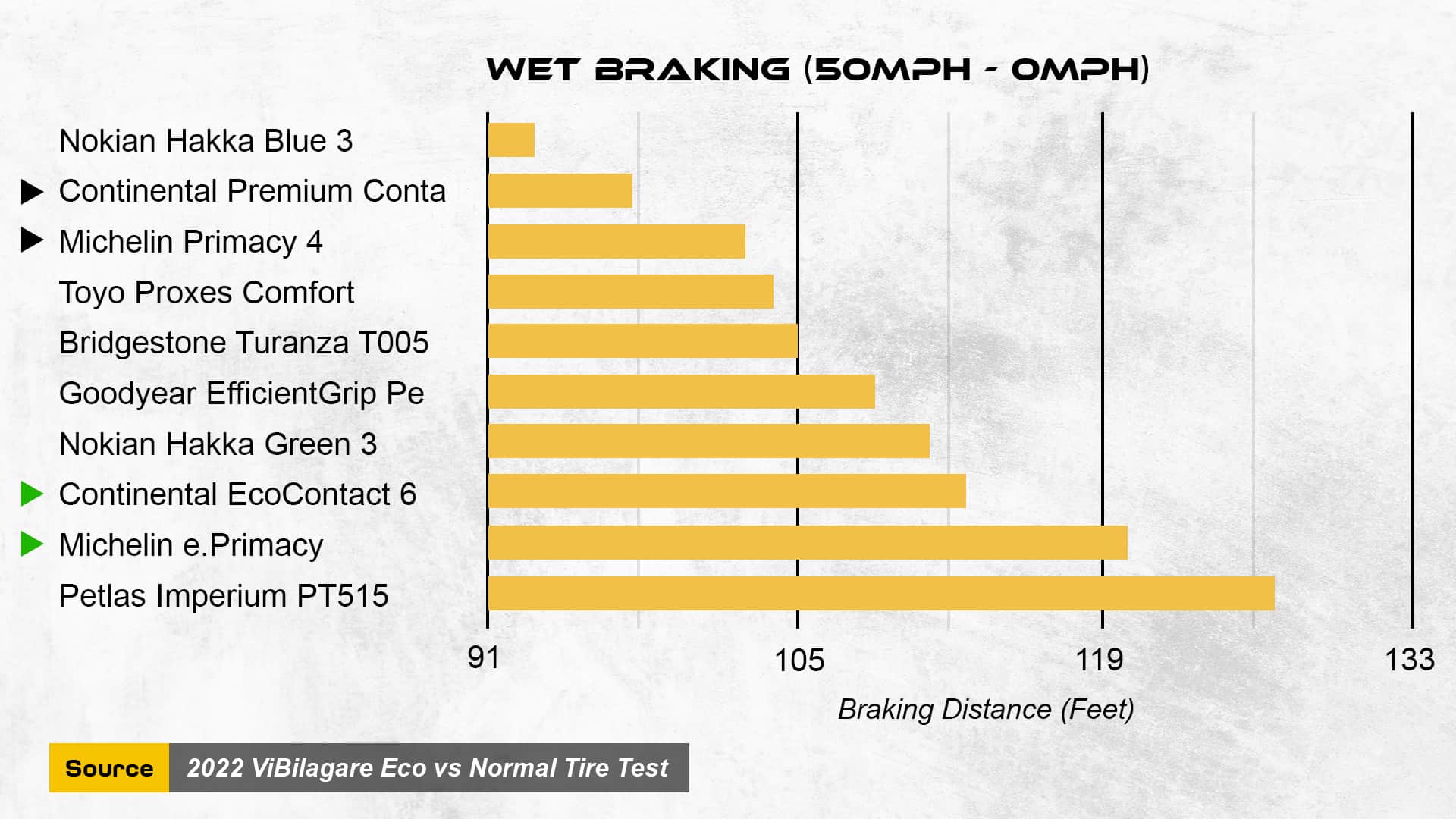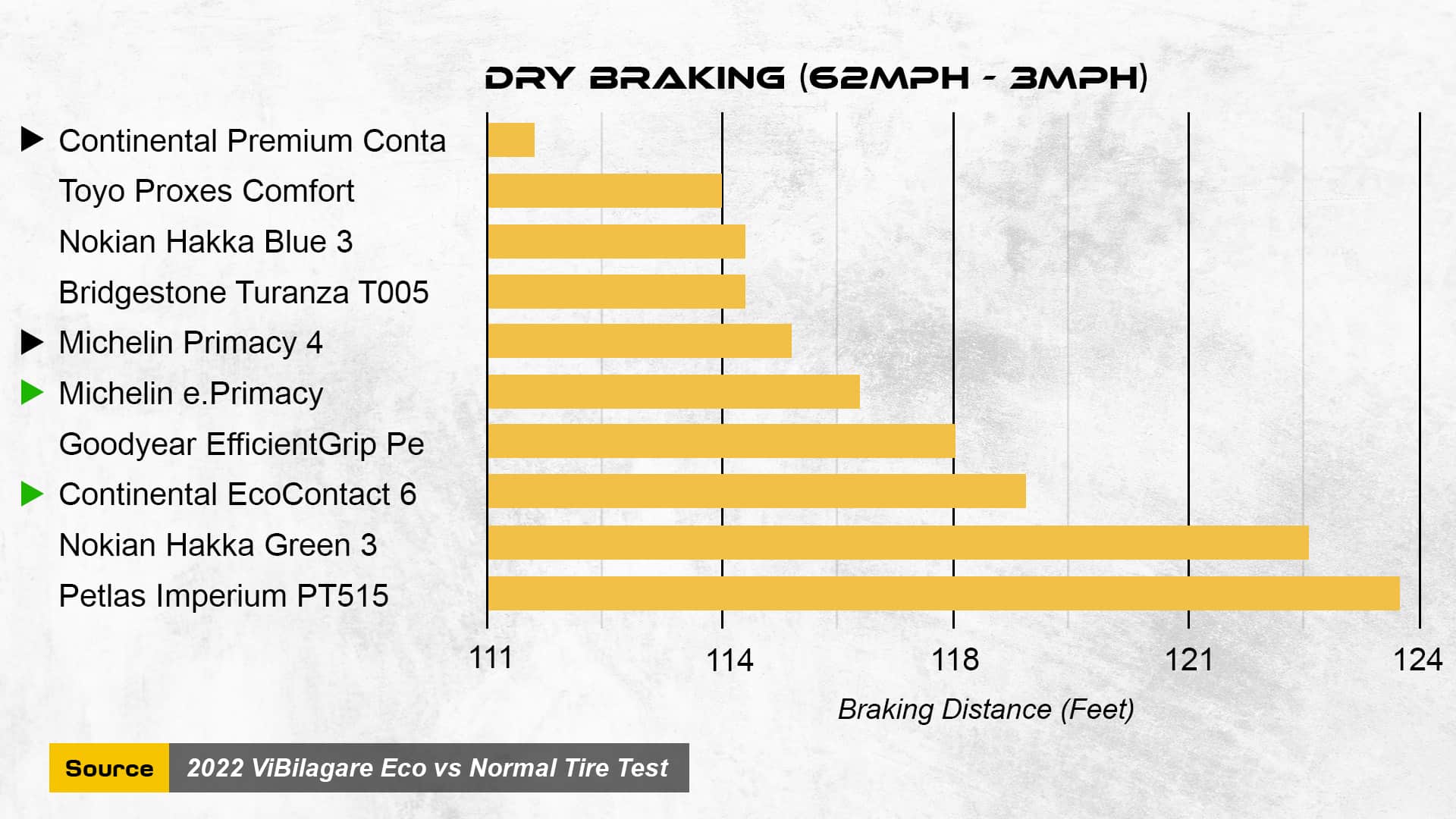What Are Eco-Friendly Tires And How Do They Perform?

As the world progresses towards more environmentally sustainable practices, tire manufacturers are working on developing eco-friendly tires that are meant to reduce the fuel consumption and minimize their production footprint.
Companies like Bridgestone, Continental, Firestone, Goodyear, Michelin, Pirelli, and Yokohama have introduced innovative technologies in their tire production to decrease rolling resistance and ensure better fuel economy.
However… is it all too good to be true? In this article, we explore the advantages and disadvantages of eco-friendly tires in real-world driving scenarios to help you make an informed decision on whether they’re right for you.
What Are Eco-Friendly Tires?
The objective of eco-friendly tires is to reduce the rolling resistance, which is the energy required to keep the tire rolling. By decreasing rolling resistance and friction, these tires aim to enhance fuel economy and the distance traveled between refills or recharges.
There are different models of eco-friendly tires available, such as the Michelin e.Primacy and the Continental EcoContact 6. These tires are dubbed ‘eco’ because they feature up to 30% less rolling resistance than your everyday tire.
According to a study by the University of Munich, when compared to regular tires, eco tires may provide roughly $250 of savings over 20,000 miles.
Advantages of Eco-friendly tires
This one comes without saying – Eco-friendliness: In some cases, the eco tires are partially built from recycled materials and are designed to weigh less. Due to this, they usually require fewer raw materials than what would have been used in making equivalent normal tires.
Reduced fuel consumption: As we’ve previously learned, eco-tires have lower rolling resistance, which translates to improved fuel economy.
While this is true, let’s look at how eco-friendly tires perform in real-life situations. The Swedish publication ViBilagare has tested ten sets of tires and included in the test regular tires and eco tires.

For quicker comparison, we’ll pay attention to Continental Premium Conta and Michelin Primacy 4 and their eco siblings – the Continental EcoContact 6 and Michelin e.Primacy.
As you can see in the chart below, the eco-friendly tires (marked with green arrows) proved indeed to have better gas mileage than ordinary tires (marked black). The difference accounts for almost 8% better gas mileage for the eco tires.

But, is there a tradeoff?
Disadvantages of Eco Tires
They underperform in certain scenarios: Eco alternatives aim for enhanced sustainability, which in turn can affect their grip and speed performance. And although some manufacturers state that their eco tires perform the same way as regular tires, well… the tests show a different picture.

The chart above clearly illustrates that regular tires outperformed eco tires in wet braking tests, which is significant as braking performance is the most critical aspect we expect from tires.
Specifically, when comparing the Continental EcoContact 6 to the PremiumContact 6, the stopping distance on wet roads at 50 mph is over 13 feet longer for the EcoContact 6, and this difference grows even more pronounced at higher speeds.
And the same applies to dry braking:

Tire experts commonly assert that there isn’t such a thing as a perfect tire. Similarly, no miracle has happened in this case either. There will always be a trade-off between grip and fuel efficiency.
More Expensive: In most cases, eco-friendly models from well-known brands are more costly than their regular tire offerings.

More difficult to find: Lastly, these types of tires may be challenging to find in comparison to conventional tires.
Our opinion is that eco tires compromise too much on real-world performance and do not justify their benefit in terms of noise reduction and lower rolling resistance since they significantly lack dry grip, wet grip, aquaplaning resistance and initial tread depth when compared to standard tires.
Eco-Friendly Technologies
Bridgestone ENLITEN
The ENLITEN technology is Bridgestone’s response to Volkswagen’s want for an environmentally friendly line of tires that offer high performance, great braking, long-lasting durability, and most importantly low rolling resistance.
According to Bridgestone, ENLITEN Technology reduces the rolling resistance by up to 20 percent compared to standard premium summer tires which in turn reduces the fuel consumption and CO2 emissions on combustion engine cars and extends the battery range on electric vehicles.
In addition to the performance benefits, ENLITEN Technology also promotes sustainability by reducing the weight of tires by up to 20 percent compared to equivalent standard premium summer tires. This means that every ENLITEN tire requires up to 2kg fewer raw material resources than what would have been used in making equivalent typical summer tires.
This technology appeared for the first time on Bridgestone’s specially-engineered Turanza Eco tires.
Bridgestone Ecopia
Interesting Fact: According to studies commissioned by the U.S. Department of Energy, low-rolling resistance tires can generate fuel savings of as much as 10%.
Bridgestone Ecopia EP422 Plus is one such example of a low-rolling resistance tire that has been extensively tested and proven to be more efficient than traditional models.
According to a test done by Firestone, comparing Ecopia EP422 Plus (215/60R16) to Firestone FR710 (215/60R16), the Ecopia tires have been shown to provide up to 20 extra miles per tank.
How did they achieve this? The Ecopia’s Fuel Saver Sidewall Compound reduces rolling resistance more effectively than conventional tires. Moreover, Bridgestone incorporates its patented NanoPro-Tech™ polymer into the tire, which minimizes energy loss and improves rolling efficiency.
Other technological features include the use of recycled ground rubber obtained from post-consumer tires, which constitutes about 5% of the tread compound. Additionally, adding silica alongside NanoPro-tech enhances fuel efficiency and reduces CO2 emissions by controlling the interactions between fillers and other rubber chemicals at a molecular level.
Continental EcoPlus
Continental has joined the trend of tire manufacturers who are creating eco-friendly tires. The company offers EcoPlus Technology in their ProContact, TrueContact, and PureContact passenger tires, providing drivers with an all-season tire option that is both environmentally friendly and fuel-efficient.
Interesting Fact: According to estimates by the US Environmental Protection Agency, each gallon of gas saved eliminates 19.4 lb of toxic CO2 emissions released into the atmosphere- thus helping to reduce our country’s dependence on oil.
There are two primary components of this EcoPlus Technology: Tg-F Polymers and Plus Silane:
Firestone Fuel Fighter
The Fuel Fighter technology from Firestone is tailored to lessen the amount of fuel used by vehicles and reduce harmful emissions like CO2 and greenhouse gases. Using polymer technology and innovative construction techniques, every aspect of a tire’s structure has been optimized for less weight and boosted fuel economy.
The nylon casing application, steel cord belts construction, tread, and sidewall rubber compounds have all been designed with an integrated approach aimed at reducing the environmental impact resulting from tires on our roads.
Goodyear Fuel Max Technology
The Goodyear Fuel Max Technology is aimed at providing better fuel efficiency, wet and dry traction, stability, and grip. Because of the low rolling resistance fuel-saving tread compound, vehicles fitted with tires with this technology can save up to 2,600 miles worth of gas throughout their lifespan.
In addition to improved fuel economy, the dual aqua channels installed within each tire provide superior wet traction by propelling water away from the tread surface.
The outer dry zone enhances grip and handling ability on different terrain types. It provides confident maneuvering regardless of whether you’re driving around corners or braking suddenly.
Michelin Energy Saver
The Michelin Energy Saver is a tire that’s designed to provide maximum fuel efficiency. According to Michelin’s rolling resistance testing, if compared to their competitors, the Energy Saver can save drivers up to $400 in gas over the course of its life. The EnergySaver Construction combined with a special type of tread rubber helps keep the tire cooler, resulting in improved fuel efficiency and reduced CO2 emissions.
Again, according to their tests, the Energy Saver can last up to 16,000 miles longer than its competitors.
Pirelli EcoImpact
Pirelli is committed to creating eco-friendly, safe and high-performance tires by using innovative compounds, internal structures and tread patterns that lower vehicle fuel consumption, carbon dioxide emissions.
To signify a tire’s compatibility with environmentally friendly goals, Pirelli EcoImpact icons are branded on the sidewall of the tires which include Energy Efficiency, Clean Air and High Mileage.
Yokohama BluEarth
Yokohama’s product engineering philosophy for eco-friendly tires, Yokohama BluEarth, aims to create a balance between driving pleasure and less environmental impact. This is achieved through various advanced technologies designed to improve the sustainability of natural resources.
There are five core technologies behind BluEarth: Nano BLEND Compound, Light Weight Technology, Advanced Inner Liner, Fuel Saving Construction, and AERO Dynamics Technology.
